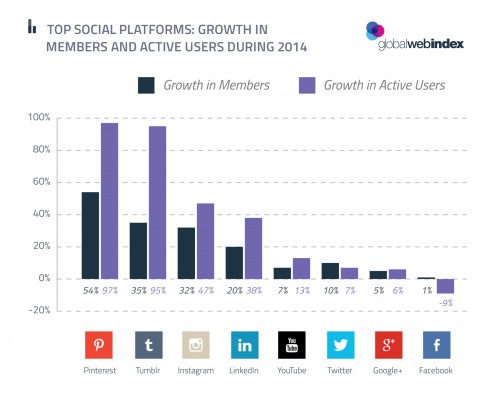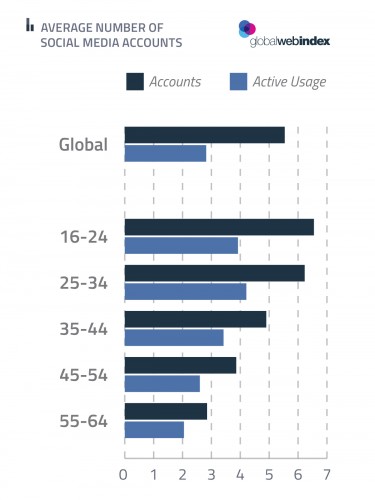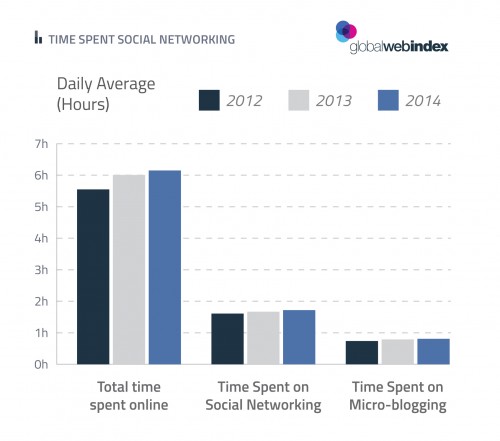Smaller Networks Boom as Facebook Dips
GlobalWebIndex’s latest figures show the major social networking winners and losers from 2014 – with Pinterest, Tumblr and Instagram growing the fastest as Facebook saw declines in all age groups and regions. Jason Mander, Head of Trends at GWI, exclusively talks us through some of the key trends and findings from the new GWI Social report.
2014 was the year of the smaller networks; while Facebook saw a small drop in active usage and the other big players (Twitter, YouTube and Google+) all recorded relatively gentle increases, it was the younger, tier-two networks like Pinterest (+97%), Tumblr (+95%) and Instagram (+47%) which experienced rapid rises in their active user bases.
Of course, it’s easier for these smaller networks to record substantial increases as they start from lower starting points; nevertheless, it’s pretty telling that Facebook saw a 9% fall in active users across 2014, and that this decline was consistent across all regions and age groups – peaking among 16-24s (-11%), 25-34s (-12%) and in Asia Pacific (-12%).
One of the most striking trends to emerge from this data is just how many of us have become multi-networkers – those who maintain accounts on a range of social platforms. Outside of China, for example, a third of internet users have visited YouTube, Facebook and Twitter in the last month – dispelling the notion that there is no or little overlap between the audiences of the leading networks. Just look at engagement rates among Facebook visitors: 9 in 10 of them are also accessing YouTube each month, while close to half are visiting Twitter too. On average, in fact, online adults now have accounts on 5.54 networks and are actively using some 2.82 of them.
Predictably, 16-24s are at the very forefront of this trend with an average of 6.55 accounts each; in contrast, 55-64s are maintaining accounts on just 2.85 services. When it comes to active usage, though, 25-34s overtake the 16-24s. Contributing factors to this include 25-34s remaining more loyal to Facebook and being the most likely to use professional networks such as LinkedIn. Equally significant is that 16-24s are the most likely to have adopted the newest networks: they score the highest figures when it comes to membership of Instagram, Pinterest and Tumblr. So, 16-24s might be the most visible networkers with accounts on the highest number of platforms, but 25-34s are the most engaged.
One consequence of these multi-networking behaviours is that we’re spending more and more time on the internet. Average daily time spent online via PCs, laptops, mobiles and tablets grew from 5.55 hours in 2012 to 6.15 in 2014 (with social networks climbing from 1.61 to 1.72 hours over the same period). That’s important food-for-thought given how many commentators have been willing to proclaim that the social networking “bubble” has burst and that the top networks are dying. Rather, we’re actually spending more time on networks now than in the earlier part of the decade – with the rise of the mobile internet, and the ability it affords us to connect to a wide range of networks at any time and from any location, being a major driver of this.
Note: GlobalWebIndex conducts quarterly research across 32 markets, representing nearly 90% of the global internet audience. It surveys more than 170,000 internet users per year, including 30,000 in both the US and UK. Download a free summary of the new GWI Social report here.


